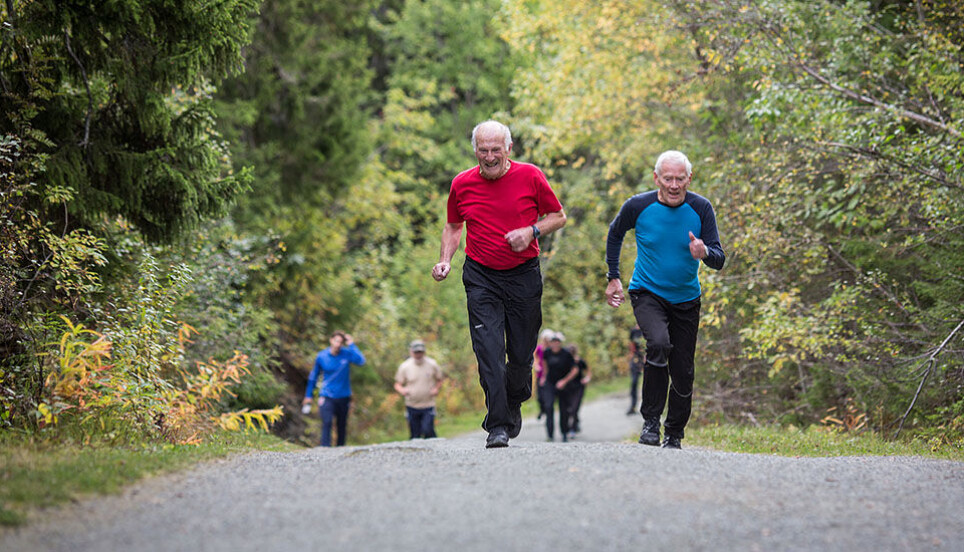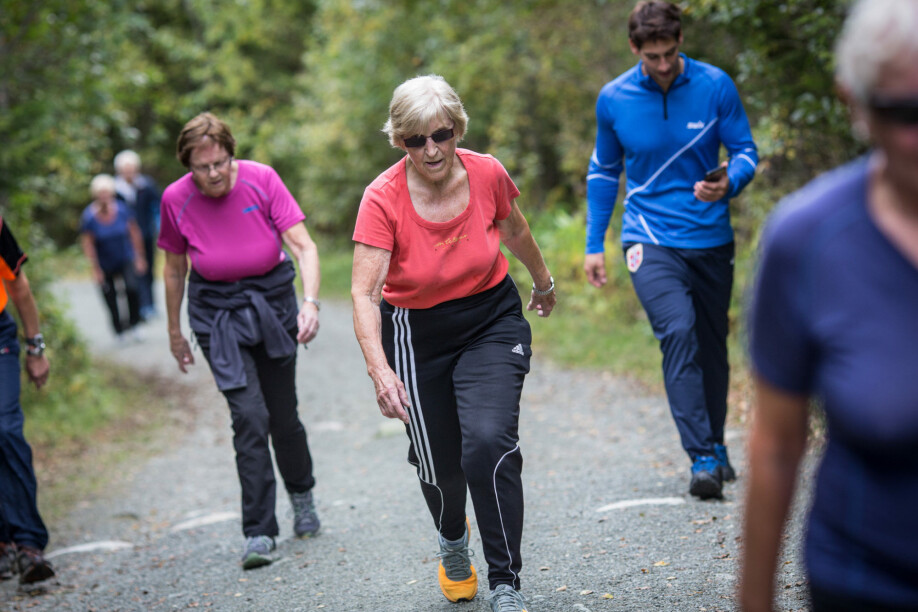THIS ARTICLE/PRESS RELEASE IS PAID FOR AND PRESENTED BY NTNU Norwegian University of Science and Technology - read more

Older people in good shape have fitter brains
Seventy- to eighty-year-olds who train for better fitness are better at solving cognitive tasks and are less likely to suffer cognitive impairment.
“Our findings suggest that being fit can protect against mild cognitive impairment in older people,” says Ekaterina Zotcheva.
Just before Christmas, Zotcheva defended her doctoral dissertation on exercise and brain health at NTNU. The day before the defence, the last study for her doctoral degree was published in the highly regarded Sports Medicine journal.
The article is just one of three recent research articles from NTNU that show how important it is for the brain to stay in good physical shape as you get older. Common to all three articles is that they are based on data from the world’s largest training study for older adults, the Generation 100 study from the Cardiac Exercise Research Group.
Dementia risk
“The Generation 100 study has been going on for almost ten years now. After the study participants had been exercising for five years, we tested the cognitive function of almost 1000 of them.”
“The men and women who had maintained or increased their physical fitness during the study had better brain health than those whose fitness had declined over the five years,” says Zotcheva.
The cognitive test that the participants took is the same one that is often used to check whether people are at risk of developing dementia.
The test assesses short-term memory, execution function and the ability to orient oneself in time and space. Scoring below a certain number indicates a risk of mild cognitive impairment.
“We know that mild cognitive impairment can lead to dementia for some individuals. The greater the increase in a participant’s fitness level during the five years of the study, the lower their probability was of developing mild cognitive impairment,” says Zotcheva.
Better at problem solving
Good conditioning appears to be an important prerequisite for good brain function in the elderly in the other two research articles as well. In both of these studies, the researchers tested the brain health of more than 100 of the participants in the Generation 100 study at start-up and after one, three and five years of training.
“Participants who were in good shape, both when the study started and later in the study, had a faster reaction time. The ones who improved their fitness level gained a somewhat better working memory,” says NTNU professor Asta Håberg.
The ability to solve cognitive problems was tested using the web-based Memoro platform, which Håberg developed in collaboration with neuropsychologist Tor Ivar Hansen.

Less brain atrophy
Håberg has been involved in the work with all three recent research articles. In the third study, the researchers performed MRI scans of the participants’ brains to see how the brain volume and thickness of the cerebral cortex changed throughout the study. Here, too, the most energetic participants came out best.
“Participants who were in good shape when the study started had a thicker cerebral cortex after one, three and five years, as compared with those who had lower maximum oxygen uptake. But we didn’t find any effect from increasing fitness during the study,” says Håberg.
The cerebral cortex is the outermost layer of the brain and is important for several important brain functions, such as attention, ability to make choices, working memory, abstract thinking and memory. This part of the brain becomes thinner with age, and thinning of the cerebral cortex in different areas is linked to different types of dementia, such as Alzheimer’s disease and frontotemporal dementia.
Fitness more important than type of exercise
All 70- to 77-year-olds in Trondheim were invited to the Generation 100 study in 2012. Those who agreed to participate were randomly assigned to five years of exercise of various kinds. One group would primarily do high intensity intervals, a second group would mainly go for walks or do other exercise with moderate intensity, and the last group would try to follow the activity recommendations of the health authorities to be physically active for at least 150 minutes each week.
The first two groups were followed up most closely by the researchers, and were offered two organized training sessions each week. The NTNU researchers looked beyond the connection between fitness and brain health and also investigated whether the type of training follow-up that participants received made a difference.
“Our results show that organized training follow-up may have given older men, but not older women, better cognitive function and lowered the probability of mild cognitive impairments. But all in all, it seems that the most important thing is that you actually train in a way that increases your fitness, regardless of whether you get organized help to be physically active or not,” says Zotcheva.
Less brain atrophy than expected
“In the groups that received follow-up with high-intensity training and training with moderate intensity, respectively, we found somewhat greater loss of brain volume in deep areas of the brain than among those who trained themselves. But we have to emphasize that everyone in the Generation 100 study – regardless of the form of exercise they did – had less brain loss than expected for people in their 70s. The group that trained on their own without organized follow-up had the least shrinkage in the hippocampus and thalamus,” Håberg says.
The training follow-up in Generation 100 was not decisive for the participants’ ability to solve cognitive tasks.
“The groups that were able to attend organized training didn’t perform any better than the group that trained on their own on various tasks, such as remembering where an object is located, memorizing words, processing information quickly or planning,” says Håberg.
Maintained good cognitive function
“It’s still worth noting that the 70-77-year-old participants on average had the same cognitive abilities after five years as at start-up, and that during the study period they even improved on some of the tests. The results show that being in good shape like the Generation 100 participants were, is important for maintaining good brain function,” Håberg says.
The training effect thus seems to be greatest for people who enter retirement age in good shape, and exercise that improves fitness can provide further benefits. So how should the elderly train to get in better shape?
“Several paths can lead to that goal, and the most important factor is to find an activity you enjoy and can continue with over time. In order to maintain or increase your fitness, you should in any case exercise regularly in a way that gets you out of breath and sweaty,” says Zotcheva.
References:
Ekaterina Zotcheva et.al.: Effects of 5 Years Aerobic Exercise on Cognition in Older Adults: The Generation 100 Study: A Randomized Controlled Trial. Sports Medicine, 2021.
Daniel R. Sokołowski et.al.: 5 Years of Exercise Intervention Did Not Benefit Cognition Compared to the Physical Activity Guidelines in Older Adults, but Higher Cardiorespiratory Fitness Did. A Generation 100 Substudy. Frontiers in Aging Neuroscience, 2021.
Jasmine Pani et.al.: Effect of 5 Years of Exercise Intervention at Different Intensities on Brain Structure in Older Adults from the General Population: A Generation 100 Substudy. Clinical Interventions in Aging, 2021.
See more content from NTNU:
-
Why are pregnant women in Norway so worried?
-
Politics on Facebook: Populist parties choose divisive issues on purpose
-
Social media is connected to cyberbullying – but not how we thought
-
Forskere ved NTNU får nesten 24 millioner av EU for å lage nye strømomformere
-
This helps the youngest children enjoy school more
-
Can we tap the ocean’s power to capture carbon?





































